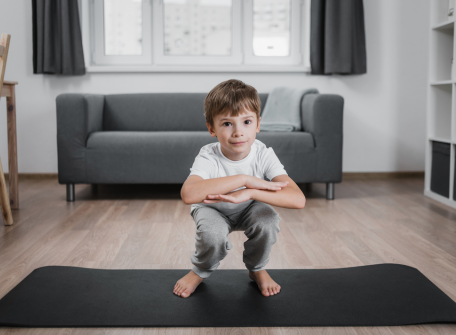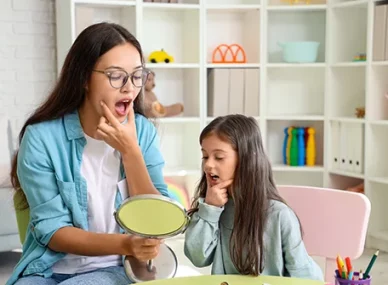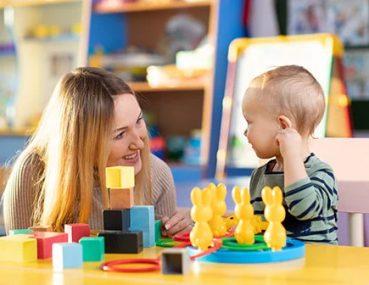Squats are beneficial for toddlers and children undergoing intensive therapy. These exercises typically focus on the lower body and offer a wide range of physical and developmental benefits to support your child’s growth and development. When you incorporate squats into pediatric physical therapy sessions, you can help your child achieve targeted developmental milestones.
Let’s understand the benefits of squats for babies and toddlers
One of the key advantages of squats for babies and toddlers is that they promote muscle strength and coordination in the legs, hips, and core. This strength is really important for stability, balance, and overall physical development. Another good thing is that squats also help improve the posture and body awareness of your child, which are important for everyday activities.
You will be happy to know that in addition to these physical benefits, squats provide sensory input and proprioceptive feedback. This can help children develop a better sense of their body position and movement in space. All things together can leave a positive impact on their coordination and agility, making activities such as crawling, walking, and running easier for the children.
Squats encourage weight-bearing exercise. This exercise stimulates bone growth and density. This comes as a great help for children experiencing developmental delays.
However, when it comes to incorporating squats into your child’s intensive physical therapy routine, it’s crucial to work with a qualified therapist or healthcare professional who can tailor the exercises to your child’s specific needs and abilities. They will be able to guide you on the appropriate intensity and technique to ensure safety and effectiveness.
Now, let’s dive deep into Incorporating Squats for Babies, Toddlers, and Children
Squat with Return to Stand on the Couch
Here, as a parent, you can encourage your baby to engage in standing while holding onto a support surface, like a couch. Make it fun by placing their favorite toys on a lower surface, such as a step or the floor. This simply encourages them to squat down while keeping one hand on the support. You need to repeat this on both sides to help your child strengthen his legs and improve balance while he shifts his weight.
Squat with Return to Stand at a Vertical Surface
Here what you need to do is to take the previous exercise a step further by increasing the challenge. Place squiz at different heights on a wall and let your child squat down to pull them off while holding onto the wall for support. This variation will help them develop even more strength and stability.
Biased Squat
Biased squats will be perfect for your child if he is already comfortable with standard squats or shows a preference for one leg. Let your kid squat with one foot elevated on a low surface, like a book or a small step. This is a position that increases the weight on the foot on the floor, providing an extra strengthening challenge. Now you need to gradually raise the surface height to shift more weight onto the standing leg as they progress.
Declined Squat
A declined surface comes of great help in case your child has difficulty keeping their heels down during squats. You can use a ramp or wedge, creating a surface that slopes downward. This evens out weight distribution, allowing your child to bear weight through their whole foot.
Prolonged Squat (“Baby Squat”)
You may know that babies are amazing at playing in a deep squat position for an extended time. Taking this into account, you need to encourage them to play in this position. This will build strength and promote hip mobility while providing sensory input. Make use of puzzles, blocks, etc on the floor to make it engaging for them.
Final Words
Incorporating these squat exercises into physiotherapy for infants or children can have numerous benefits. It helps them develop strength, balance, and mobility while engaging in enjoyable activities.
As mentioned above, before you incorporate any squat exercise, you are advised to consult an experienced pediatric physiotherapist first.
At Hope AMC, we offer intensive physiotherapy in Dubai for children with Autism, Cerebral Palsy, and other neurological or physical conditions! You can book a consultation anytime to discuss the physical difficulties or condition of your child. We are committed to supporting children in overcoming their challenges and finding happiness in life through personalized therapeutic treatments.






